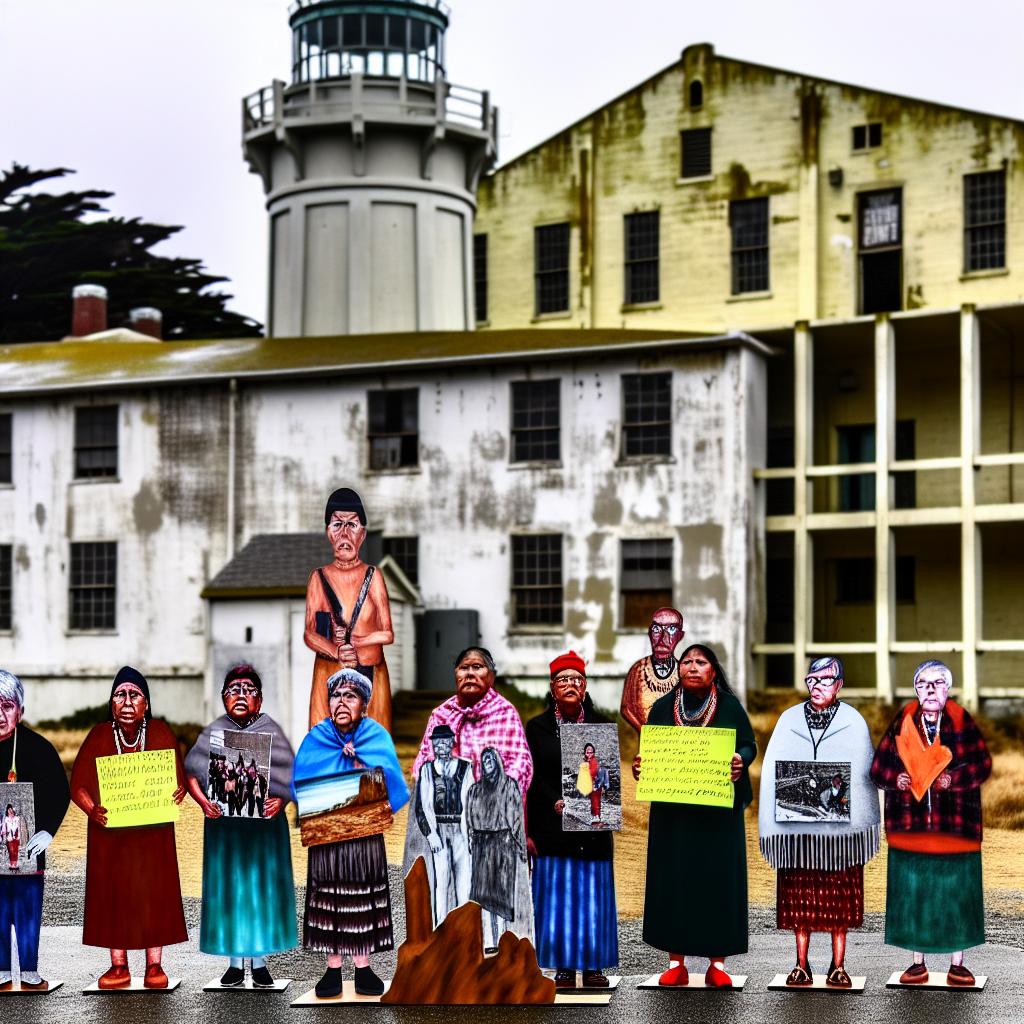The Historical Context of Alcatraz Occupation
In November 1969, a group of Native American activists set out to claim Alcatraz Island. The occupation marked a pivotal moment in the Native American civil rights movement, drawing attention to the struggles and rights of Indigenous people in the United States. The event took place during a period of increasing activism among minority groups aiming to address long-standing inequities.
The Activists’ Objectives
Upon arriving on Alcatraz Island, the activists, led by Richard Oakes, declared it Native land by “right of discovery.” Their primary aim was to highlight the harsh conditions faced by Native Americans on reservations and to advocate for fair treatment and federal policy reform. By occupying this former prison site, they also sought to expose the historical injustices and treaty violations perpetrated by the United States government against Indigenous tribes.
Background of Native American Activism in 1969
The 1960s were a time of significant social upheaval and change in America, with many civil rights movements gaining attention. For Native Americans, the decade was marked by a push against years of federal neglect and mistreatment, culminating in events like the National Indian Youth Council’s protests and the rise of the American Indian Movement (AIM). Despite having treaties that the United States government was supposed to honor, many Native American communities were living in poverty, suffering from poor education, inadequate healthcare, and lack of economic opportunities.
The Importance of Alcatraz Island
Alcatraz Island had a symbolic significance. It was a site of isolation and incarceration, mirroring the feeling of marginalization experienced by Native American communities. The choice to occupy this island was strategic, highlighting the ongoing jail-like conditions under which Native Americans lived across the nation. Moreover, the notion of claiming the island through “right of discovery” turned the historical narrative back on itself, using the same principle that justified European colonization.
Response from Media and Public
The occupation of Alcatraz quickly captured national headlines. Media coverage was extensive and brought significant attention to the activists’ cause. The public was made aware of the activists’ demands and the broader Native American civil rights issues. While support was widespread, the media also contributed to a platform where Native voices could be shared. This was a marked change from a time when Indigenous issues were predominantly ignored.
International Attention and Support
Beyond the United States, the occupation of Alcatraz garnered international attention. Many non-Indigenous organizations expressed solidarity with the activists, reinforcing the global relevance of Indigenous rights. This international awareness was crucial in securing broader support and resources, sustaining the occupation for as long as it did.
Duration and Challenges of the Occupation
The occupation lasted for 19 months, during which the activists faced numerous challenges. With little in terms of existing infrastructure on the island, essentials such as food, water, and electricity were scarce. Despite these difficulties, the occupation garnered significant media attention and drew support from various organizations and sympathetic individuals. However, internal discord and external pressures eventually weakened the movement. In mid-1971, federal authorities removed the remaining protesters from Alcatraz.
Struggles in Sustaining the Movement
Maintenance of the occupation was arduous. Apart from the practical challenges of living on an island with minimal infrastructure, the activists also had to deal with internal conflicts and differing views on the direction of the occupation. These internal issues were compounded by federal government’s resolve to remove the occupiers, cutting off essential supplies and isolating the island in hopes of ending the occupation peacefully.
Impact and Legacy
The occupation of Alcatraz Island had a profound impact on Native American rights activism. It inspired subsequent movements and actions, proving to be a catalyst for policy changes. In the years that followed, the U.S. government established policies that aimed to improve living conditions on reservations and offered more support for Native American self-determination. Despite the occupation’s challenges, the spirit and determination of the activists left a lasting legacy on Native American advocacy.
Policy Changes Stemming from the Occupation
In the aftermath of Alcatraz, the U.S. government started to reevaluate its approach toward Native Americans. There was a noticeable shift towards policies that promoted self-determination, with significant legislation passed in the 1970s benefitting Indigenous communities. This included acts related to education, health, and tribal sovereignty, reflecting the successful highlighting of these issues during the occupation.
The Occupation as a Template for Activism
The Alcatraz occupation set a precedent for subsequent Indigenous movements. It demonstrated the power of symbolic action in gaining attention and shifting narratives. Events such as the Trail of Broken Treaties, and the subsequent occupation of the Bureau of Indian Affairs in Washington, D.C., drew clear inspiration from the bold actions taken on Alcatraz Island.
Reflections on the Movement’s Philosophy
The philosophy behind the occupation, emphasizing unity and shared heritage among diverse Indigenous tribes, remains relevant. The experience underscored the importance of solidarity in confronting colonizing powers and advocating for Indigenous sovereignty—all of which resonate in contemporary movements advocating for Indigenous peoples’ rights not just in the U.S., but globally.
Further Reading and Resources
For more detailed accounts and analyses of the Alcatraz occupation, numerous resources are available—including books by historians and autobiographies from activists involved in the movement. For those interested in deeper exploration, consider visiting this site to learn more about the historical significance of Alcatraz Island.
Other significant works include “Alcatraz! Alcatraz!: The Indian Occupation of 1969–1971” by Adam Fortunate Eagle and “Heart of the Rock: The Indian Invasion of Alcatraz” by Adam Snake. These works provide insight into the strategies, challenges, and internal dynamics of the occupation, contributing to a fuller understanding of this pivotal event in Native American history.

